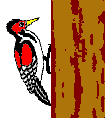Would you be interested in contributing content to the world wide web's portal to network nature lovers?
Do you or someone you know have a veritable closet full of wildlife adventure stories, articles, pictures or other interesting media which would interest other nature
lovers?
 Have you always wanted to write about a specific travel adventure to the jungles/mountains/rivers or a memorable animal contact
but never been motivated enough or given the forum to do so?
Have you always wanted to write about a specific travel adventure to the jungles/mountains/rivers or a memorable animal contact
but never been motivated enough or given the forum to do so?
Do you have photographs of animals/nature's moods/forest tapestry, which sit gathering dust, never finding an audience beyond family and friends?
If your answer is yes to any of the above, read on!
As the founder and content aggregator for this website dedicated to bringing people all over the world to the 'Indian Wildlife Club' I need your help. With tightening
budgets all around the tech and dot-com market place, IndianWildlifeClub.com is in need of support from those who love nature and wildlife.
How can you help?
By offering content
What kinds of content are you looking for?
Two main categories: editorial and images.
EDITORIAL
250+words on your favourite animal contact story, favourite nature spots....or your feelings on conservation of wildlife, environment, trees, your review of a remarkable video/book
on Indian wildlife, write up on an NGO which prefers to do the work quietly outside public gaze, reports of volunteer efforts to protect rivers, trees, wildlife in your area.
IMAGES
Whether you are an amateur or professional, the pleasure of sharing your work with a group who share your passion is immense.
Pictures are even more valuable to us if they accompany an editorial piece, which you or a partner has written.
How will my work be used?
With the highest level of integrity and appreciation.
 Unless we negotiate with you for use of rights other than the website, anything you offer to IndianWildlifeClub.com will be used
exclusively on the pages of our website. We may, at a later date, get back in touch with you to discuss using your work in a CD ROM, or video about nature/wildlife which we would sell on the website. Of course you would receive payment for this use. But for
now, all we are interested in is the right to use your content on the website.
Unless we negotiate with you for use of rights other than the website, anything you offer to IndianWildlifeClub.com will be used
exclusively on the pages of our website. We may, at a later date, get back in touch with you to discuss using your work in a CD ROM, or video about nature/wildlife which we would sell on the website. Of course you would receive payment for this use. But for
now, all we are interested in is the right to use your content on the website.
Will I get paid for this?
Currently, the simple answer to this question is No.
But there are several benefits we can offer beyond cash, which may be immensely satisfying to you:
a) Exposure to a global market of your skills as a writer, photographer, or videographer.
b) Traffic to your own website. We will credit all work and be happy to place a link to your website.
c) Establish a good working relationship with IndianWildlifeClub.com in anticipation of future, paid assignments.
d) Helping a worthwhile project and building global appreciation of India's natural wealth which needs protection.
What is Indian Wildlife Club all about ?
IndianWildlifeClub.com is a forum for wildlife lovers to share the wonder and beauty of India's exclusive wildlife and birds through reports, photographs and videos.
It is the vision of this club that appreciation of the beauty and diversity of wildlife can promote commitment to a healthy environment objective which in turn achieves a conservation objective. The site gets visitors from an average of 40 countries.
The website offers videos and CDs on wildlife produced by independent and committed producers of India. The film and television industry has grown to become the greatest
single force for education and change that the world has ever known, with the ability to reach all corners of the globe and touch the hearts of all people, regardless of class, religion and ethnic origin. We do see the website developing into an exclusive
Indian Wildlife Channel in the future.
The site is not all about clicks though. The Mumbai chapter of the club has a few active members who is working in tandem with the Bombay Natural History Society. You
can read minutes of the club's meetings at Club News.The Pune chapter has been arranging slide shows and also is helping create a butterfly garden in a local school. The Delhi chapter has been organizing wildlife photo exhibitions, art camps and screenings.
It is also associated with the yearly Cathay Pacific Wilderness Program for school children.
Nature lovers know very well the alarming disappearance and destruction of habitat around the world that is causing what biologists refer to as the 6th major extinction
period. As more and more of humanity moves to large urban centres, our connection with and need for nature becomes less obvious. There has never been a time when a conservation message is more urgently needed.
 Conserving species, protecting the environment, safeguarding individual animal welfare - these are the core missions of Indian Wildlife Club. But however hard you
work, if no one gets to hear about your projects then attitudes remain unchanged, public support suffers and things get steadily worse. Getting our message out, to inform, to educate, to encourage and inspire - and to bring about change for good - is an essential
task. We hope to be a forum that can marshal the energies and talents of the common man to actively support the conservation of the natural world.
Conserving species, protecting the environment, safeguarding individual animal welfare - these are the core missions of Indian Wildlife Club. But however hard you
work, if no one gets to hear about your projects then attitudes remain unchanged, public support suffers and things get steadily worse. Getting our message out, to inform, to educate, to encourage and inspire - and to bring about change for good - is an essential
task. We hope to be a forum that can marshal the energies and talents of the common man to actively support the conservation of the natural world.
How does IndianWildlifeClub.com support its activities?
Good question! There are three current revenue models we are pursuing:
a) Sponsorship and advertisement.
b) Marketing of videos/CDs
c) Subscription to premium areas of the site ( projected model)
How do I submit content?
It is easy! Just send an e-mail to me (susan_sharma@hotmail.com) and tell me about your idea. Before sending any material by post, it is required that you contact me through e-mail.
 I will do my best to respond in a timely manner to everyone who contacts me in this regard.
I will do my best to respond in a timely manner to everyone who contacts me in this regard.
Whether you submit content to us or merely visit the site as an active member of Indian wildlife Club, I offer my deepest thanks for your support. Let us create a web force which percolate
to the physical chapters and enthuse them to actively take up field projects.
We invite club members to send us 'species profiles' on endangered animals/birds
Join Us In Our Efforts.